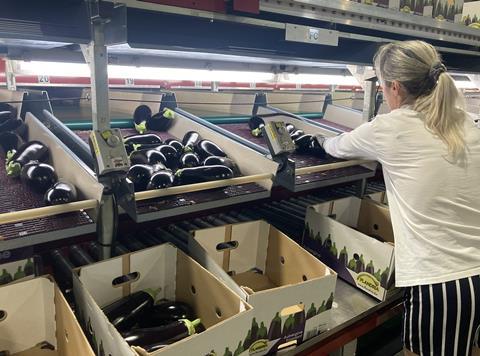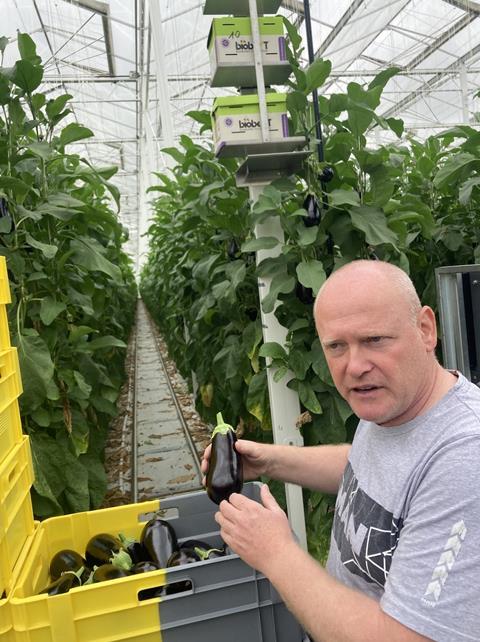Belgian aubergine producer Stannuco’s automated greenhouse is the result of more than a decade of observation, experience and learning, according to owner Steven Van Nuffelen

Over the past decade, Belgian grower Stannuco has transformed the way aubergines are cultivated and packed in the country, using hands-on experience to drive innovation in the right direction.
Steven Van Nuffelen, who co-runs the business with his wife, recalls the company’s humble beginnings. “We started in 1993 with peppers,” he says. “After 20 years, we wanted a second vegetable. We tried aubergines in a small part of the greenhouse, learned about them and eventually built a dedicated 6ha greenhouse – fully automated, just for aubergines.”
This purpose-built facility is the result of years of problem-solving. “You can’t use the same automation for aubergines as for peppers,” Van Nuffelen explains. “They’re heavier, harder to handle and more delicate during packing.”

To address this, Stannuco developed a custom crate system, allowing up to 40 stackable boxes per automated cart, easing the strain on workers. “It’s better for their backs, not having to lift full crates,” he says. “We had three years to learn before building this system.”
Stannuco launched its high-tech greenhouse in 2020, just as the Covid pandemic began. “We didn’t know what to expect,” he recalls. “Border closures meant construction workers couldn’t come in from the Netherlands and other places. But we managed anyway.”
Now, the only manual task left is harvesting, with around 20-30 workers, depending on the time of the season. “The system helps us keep workers and shorten their days,” says Van Nuffelen. “Aubergine picking is hard work. Conditions are warm, and the hairs from the stems can start to irritate the throat after a while, so workers prefer harvesting peppers.”
The packing line has 46 outputs and is highly precise. The aubergines are sorted by weight – with five gradations between 100g and 400g – and placed into 5kg boxes by hand. For the final kilo, the line’s computer automatically works out the ideal combination of aubergines to reach the correct weight.
Most of Stannuco’s aubergines are exported to Germany, with smaller volumes heading to the UK and Scandinavia. “Demand for aubergines is strong in Germany, especially in the large Turkish community,” says Van Nuffelen. “Interest from the UK is also growing. Young people, especially, are more open to trying aubergines. They see it in recipes online. And restaurants often have an aubergine dish as their vegetarian option, so there is potential for growth.”
However, despite impressive technological leaps and great market potential, Van Nuffelen says there is still work to do when it comes to domestic consumption. “Each Belgian eats only 300g of aubergine a year,” he says. “That’s just one aubergine! In Turkey, each person consumes more than 5kg a year on average.”
Climate change is also creating new problems. “Each year, the problem with insects is worse,” says Van Nuffelen. “Due to global warming, many insects that would normally die in winter are surviving. So we always have more and more insects, including whitefly and stink bugs. We have a shading system that helps limit their numbers in the greenhouse.”
And then there is the threat of ToBRFV, the virus that has plagued tomato growers in recent years. According to Van Nuffelen, the virus can be passed on to aubergines, though strict safeguards have ensured no signs of infection have been detected in Belgium or the Netherlands.



